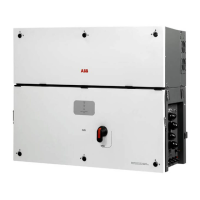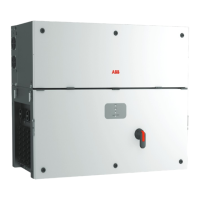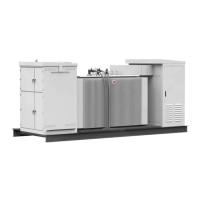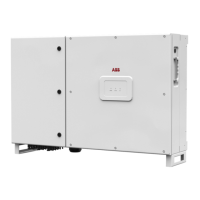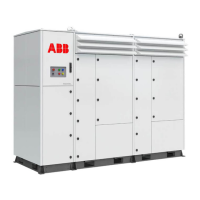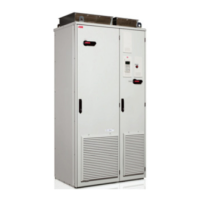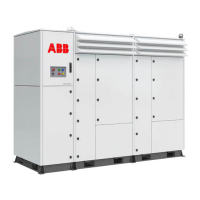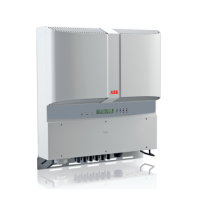62 5.4.8 Connection of the DC interface cables
65 5.5 Routing the cables to the inverter
66 5.6 Grid output connection (AC side)
66 5.6.1 Characteristics and sizing of the protective
grounding cable
67 5.6.2 Load protection breaker (AC disconnect
switch)
67 5.6.3 differential protection downstream of the
inverter
68 5.6.4 Characteristics and sizing of the line cable
68 5.6.5 AC output cables connection
73 5.7 Operations preliminary to the connection of the
PV generator
73 5.7.1 Checking of leakage to ground of the
photovoltaic generator
73 5.7.2 Checking of string voltage
73 5.7.3 Checking the correct polarity of the strings
74 5.8 Input connection (DC)
75 5.8.1 Installation procedure for quick-fit connectors
77 5.8.2 String connection
79 5.8.3 Quick fit connector disconnection procedure
80 5.9 Connection of the communication and control
signals
80 5.9.1 Communication and control board references
81 5.9.2 Connections to the communication and
control board
82 5.9.3 Ethernet connection
84 5.9.4 Serial communication connection (RS485 -
Slave mode)
86 5.9.5 RS485 RJ45 external connector for ABB Service
operation
87 5.9.6 Serial communication connection (RS485 -
Master mode)
87 5.9.7 Remote control connection
88 5.9.8 Multifunction Relay connection (ALARM and
AUX)
88 5.9.9 Demand Response Mode 0 (AS/NZS 4777.2)
6. Instruments
89 6.1 General conditions
90 6.2 Description of the LED panel
90 6.3 User interface
90 6.3.1 ABB Installer for Solar Inverters
90 6.3.2 Integrated Web User Interface
90 6.3.3 Aurora Vision Plant Management Platform
91 6.4 Measurement tolerance
7. Operation
92 7.1 General conditions
93 7.2 Commissioning
93 7.2.1 Commissioning via Installer for Solar Inverters
mobile APP
100 7.2.2 Commissioning Via Web User Interface -
Wireless connection
106 7.3 LEDs behaviour
108 7.4 Connection to Web User Interface
108 7.4.1 Access to the Web User Interface
109 7.4.2 Web UI - Login page
110 7.5 Web User Interface menu structure
111 7.5.1 MAIN menu
111 7.5.2 SETTINGS menu
116 7.5.3 INVERTER LOG menu
116 7.5.4 USER menu
117 7.5.5 CONNECTIVITY menu
121 7.5.6 SERVICE TOOLS menu
123 7.5.7 INFORMATION menu
8. Maintenance
124 8.1 General conditions
125 8.2 Inverter total de-energization and safe access
125 8.2.1 Operator and maintenance personnel skills/
prerequisites
125 8.2.2 Clothing and protection of personnel
125 8.2.3 Safety equipment and tools
126 8.2.4 Inverter total de-energization and safe access
procedure
141 8.3 Routine maintenance
141 8.3.1 Recommended replacement intervals of
components
142 8.4 Replacing of fan sections
142 8.4.1 Replacing of the side fan section
143 8.4.2 Replacing of the top fan section
144 8.4.3 Replacing the internal fan section
145 8.5 Replacing the DC surge arrester cartridge
146 8.6 Replacing the AC surge arrester cartridge
147 8.7 Replacement of the MEMORY board
148 8.8 Replacement of the COMM RS485 board
149 8.9 Replacement of the buffer battery
150 8.10 Procedure for dismantling the equipment
152 8.11 Troubleshooting
152 8.11.1 Web User Interface and wireless
communication troubleshooting
155 8.11.2 Alarm Messages of the Inverter
164 8.11.3 Power limitation messages
165 8.12 “Registration website” and “Admin Plus token”
167 8.13 Verification of ground leakage
167 8.13.1 Behaviour of a system without leakage
168 8.13.2 Behaviour of a system with leakage
169 8.14 Measuring the isolation resistance of the PV
generator
170 8.15 Storage and dismantling
170 8.15.1 Storage of the equipment or prolonged stop
170 8.15.2 Dismantling, decommissioning and disposal
9. Attachments
171 9.1 Port and network services used by the inverter
171 9.1.1 IP Network Services
172 9.1.2 Network Hosts
172 9.1.3 Inverter network configuration
